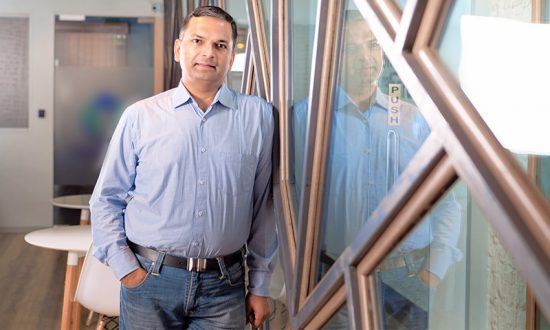Rishi Das is an accomplished industry leader and a well-recognised entrepreneur. His interest in diverse sectors has led him on a journey of growth across talent acquisition, HR management & commercial real estate. This exposure has helped him create great value through the companies he has set up, namely CareerNet, HirePro & IndiQube.
Wouldn’t you agree that our perception of office has changed significantly after the pandemic? The rising adoption of flexible workplaces is giving a pretty loud and clear message that employee will be at the center of this workplace transition. With employees engaging even from remote locations, the typical one centre corporate headquarters are no longer the need of businesses. Now, more roles are being performed remotely than ever before and there are many factors at play ranging from flexible contract tenures, capex to opex conversion, commute time reduction, talent acquisition, employee retention amongst others.
Modern businesses are increasingly adopting a hub-and-spoke model, but are these offices futuristic? What are their working methods, and how are companies now implementing them? Let’s take a look at these more closely!
So, what exactly is the hub and spoke model?
Hub and spoke model is simply a flexible workstation solution. There is one centrally located office, called the hub, and smaller alternate offices in multiple locations called the spoke. Such offices allow workers to work from either their city hub or any dedicated alternate locations within easy reach of their homes. It includes more regional workplaces and shorter travelling times than the more conventional headquarters model, where a corporation runs from a single-centre head office in a big city.
But why talk about this now?
It’s no secret that Covid has impacted firms in various industries. Costs are rising, and infrastructure requirements are becoming more stringent than ever. As a result, many businesses have begun to consider the Hub and Spoke model as a long-term business solution to reduce employee commute times, save costs and secure the safety of their employees.
Businesses are harnessing the benefits of flexibility in their workplaces while decreasing the blockage of cash in their working capital and Capex by using this strategy. This allows them to focus their resources on its core operations while being considerably more dynamic.
Let’s take a deeper look at the long-term benefits-
- It’s like having the best of both worlds
Fujitsu, Google, Amazon, and Virgin Money are among the companies that have already implemented or announced the hub-and-spoke model. It gives teams access to office facilities while also allowing them to work from places near them. Satellite offices help avoid the disadvantages of remote work such as isolation, poor teamwork, and impromptu desk configurations. Further, they also mirror some of its benefits, such as reduced time spent travelling and allowing workers to work closer home rather than at home.
- Getting a larger talent pool
Businesses may also tap into a larger talent pool using the hub and spoke model. Office space is a strategic tool for attracting and retaining the best. Therefore, a more significant geographic network of high-quality work settings outside the Hubs might tap into a broader talent pool.
- Personalising
Personalization is at the heart of the future of work. Organisations allow workers to choose how and where they work best, whether in a designated office zone or remotely, thanks to the change in hybrid work and hub-and-spoke office architecture. Although businesses will do things their own way, contemporary workplaces will have a common thread of flexibility and a fresh style.
- Exploring new market possibilities
A larger talent pool is further complemented by the freedom to pursue opportunities outside the existing market. Companies can scale and expand more effectively by renting space on flexible terms.
Most flexible office providers provide month-to-month or pay-as-you-grow leasing arrangements that allow businesses to tailor office space to their specific needs. If a new market proves to be less receptive than anticipated, the company can downsize swiftly and at a low cost.
- Optimising the costs
The hub-and-spoke model can also be less expensive than having a single headquarters. Because you only pay for the space you utilize, flexible space solutions can help businesses save money. Month-to-month contracts can allow them to adapt fast to developments in their sectors while also allowing them to scale up.
We understand that choice and autonomy will be critical components of every company’s real estate strategy in the future. How to convert the office into a collaboration hub will be essential in the office’s future success. The rise of the hub-and-spoke is indeed the future of flexible workspaces. Have you thought about restructuring your office needs too?


